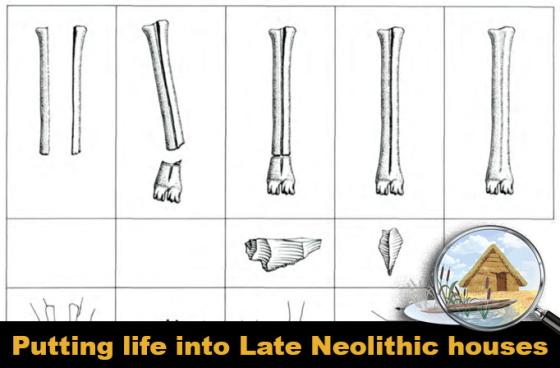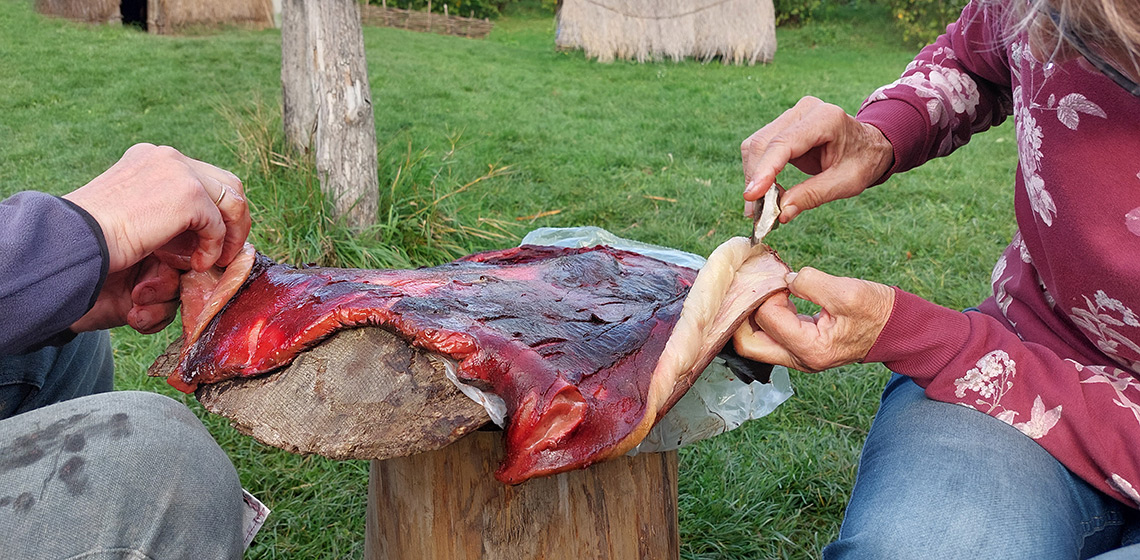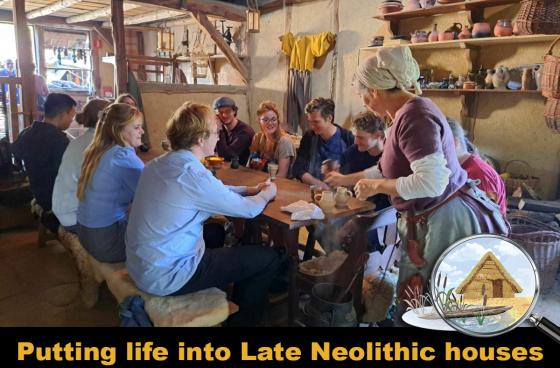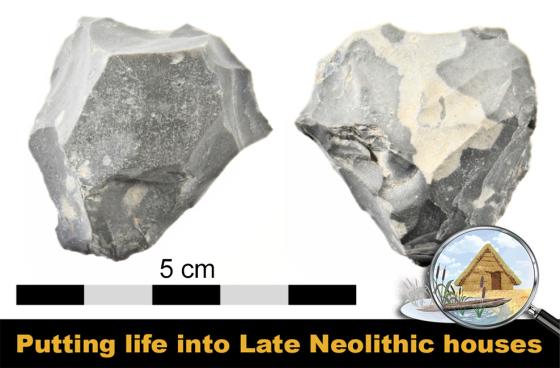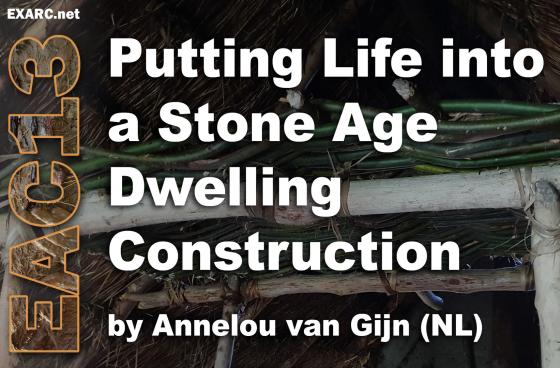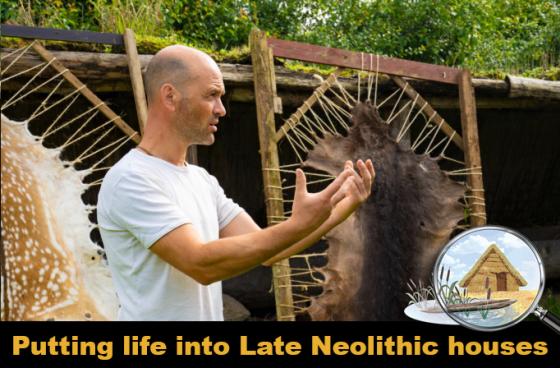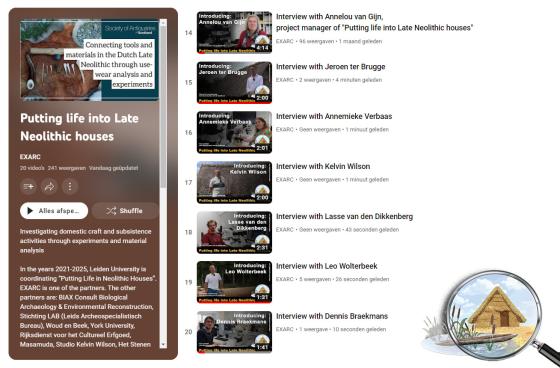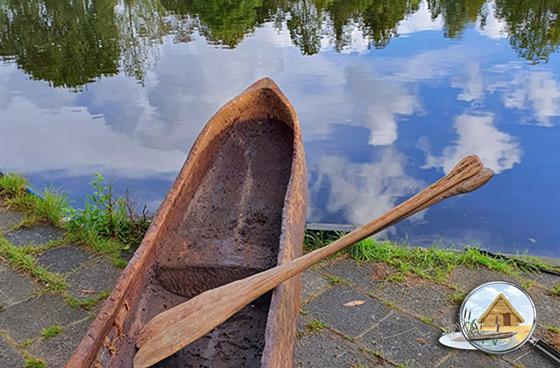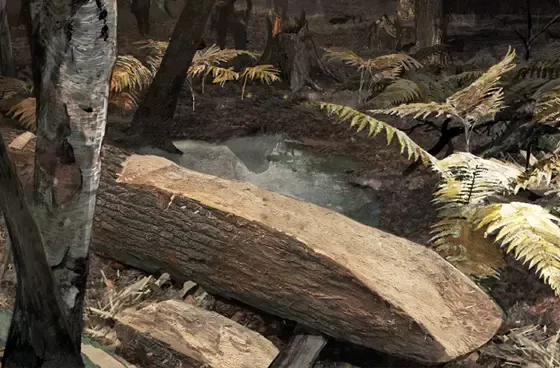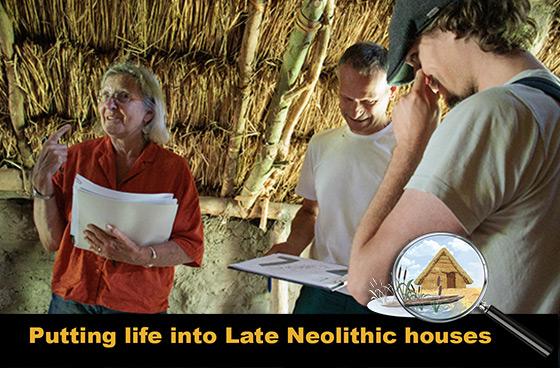Telt NL
Scraping Seal Skins with Mineral Additives
Archon Summer School for Experimental Archaeology
From the 21-23 August ARCHON organised a summer school for experimental archaeology. The summer school was organised in collaboration with the Putting Life into Late Neolithic Houses Project.
The summer school was held in three different locations, aimed to highlight three major aspects of experimental archaeological research. On the first day a symposium was held to highlight different case-studies on scientific archaeological experiments. The second day consisted of hands-on prehistoric craft/technology workshops in Masamuda. During the last day we visited the Eindhoven Museum where students were introduced to the concept of living experiments, and the value of archaeological open-air museums in public education.
Recycling Flint Axes – New Scientific Study Published
Putting Life into Late Neolithic Houses at EAC13
The essential knowledge of a craftsperson
The research project Putting Life into Late Neolithic Houses is a rather comprehensive research project that aims to understand various aspects of Neolithic life in the Rhine/Meuse delta of the Netherlands. Because of the interdisciplinary nature of the project, people with different skills and knowledge are required. Apart from academics, the project needs people skilled in crafts. Our team member Diederik Pomstra is such a craftsperson.
Who will put Life in Late Neolithic Houses?
We are in the midst of a large project, where a dozen specialists from all directions are putting life into Stone Age houses. Who are they? We interviewed a large part of this team, coordinated by Leiden University and asked them about themselves and their role in the project. The group includes of course archaeologists of all types, but also a museum director, an artist, and several other professionals. Who can you spot? They talk about their favourite task in the project and of course the famous question about what they want to get out of the project in the end?
Putting Life into Late Neolithic Houses is funded by the Dutch Research Council NWO (AIB.19.020).
Putting Life into Late Neolithic Houses: Dugout was let to water
After over one year of working on the Neolithic dugout, the team of Putting Life into Late Neolithic Houses was finally ready to test the dugout on the water. On Friday, 16 September 2022 at 10 am, it was time to test the water suitability of the dugout. The team carried it to the nearby canoe club near the Vlaardingencultuurhuis and brought it to the water. Everyone was keen to see how it would float.
Making a dugout - visualisation by Kelvin Wilson
Making a dugout canoe was a big task in 2021, within the Putting Life into Late Neolithic Houses project. It was done by the Masamuda boat builders (click here for more). Here the next step - the visualisation by Kelvin Wilson.
This visualisation is based on archaeological data and the practical knowledge of the team members of the project Putting Life into Late Neolithic Houses: studying domestic craft and subsistence activities through experiments and material analysis. The choices made are accounted for in the text below.
All copyright lies with Kelvin Wilson and the University of Leiden.
Putting Life into Late Neolithic Houses research update
On Saturday, 2 July 2022, the team of the Putting Life into Late Neolithic Houses project came together at the Vlaardingencultuurhuis to discuss progress as well as how to proceed in the future. Sadly, due to illness, some of the memebrs of the project could not attend. Nevertheless, the meeting was a great success in terms of discussing current tasks and upcoming ones, like furnishing the Neolithic house reconstruction at Masamuda.
The team is interested in the connection between the three sites they are investigating - Vlaardingen, Steynhof and Hekelingen - and how people moved between them. Mobility played an important role in the Late Neolithic and is an important aspect to consider when looking at the sites. More research, tests and experiments need to be conducted to draw conclusions, but there are some indicators that we might need to rethink how we see those sites, the people that lived and worked there and how these sites were used.

